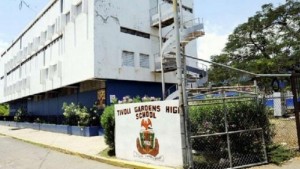School Zones
There has been much recent confrontation on the location of secondary schools and the results they achieve.
The Minister of Education believes that they should be located near their closest foundation primary school, or residence. Parents believe they should be near an institution that promises the best in education, and/or athletics, to illustrate the character of the student. This is not the first of these efforts in this country, nor in many other countries.Needless to say a lot of thought, money and resources have to be brought into play.
A recent writer raised the point that some of the schools are in undisciplined social areas where the student might receive a stab in the back; as opposed to a slap in the back for praise. The writer exposes disparities and discrimination in schools, a product of social inequality; then points out that such behaviour is a product of GSAT examiners. Why should this interpretation be considered complicit?

This system has worked for years and has seen the educational filter improve. Though it has been changed many times to accent various subjects, and to improve others, how are we to replace it? With another standardised set of tests and exams until we reach Z-SAT? As each year lengthens to create a new year, the world changes, educational levels also change, and standards like G-Sat have to be modified. I strongly recommend we do not throw it out, but find out why it is insufficient, and fix it; less trouble, less cost.
No matter, it has taken the Minister through, and taken me through, and many others, because it represents a ‘fence’’ or a filter of some sort, which restrains slower students, correctly or incorrectly, and makes adjustments.
Authors united data from two states, Louisiana and Massachusetts — both of which had fully adopted the new teacher evaluation standards — in order to assess the distribution of effective teachers across schools of varying populations. The results show that Louisiana students in schools with high minority enrolment are more than twice as likely to have an ineffective teacher as students in schools with low minority enrolment. When measured against economic status alone, poor school districts in this state are more than three times as likely to staff ineffective teachers.
Although Massachusetts has a lower percentage of ineffective teachers, the distribution is similar. Students in high minority or low-income schools in the Bay State are significantly more likely to be placed with teachers who are evaluated at a sub-standard-rating, and it seems in Jamaica consequently the affluence and amenities in a school will likely encourage students to succeed.
Somehow in all of this we are missing the most important ingredient: The student. Most children in my view are a product of their environment, and their desire to succeed is mostly caused by the will and influence of a parent or guardian, or teacher. Somewhere in all the dissatisfied minority and underprivileged are the sparks of fire that cause a single child to become more aggressive at learning, more determined to achieve perfection, more humble to accept victory.
There is a humble teacher, of my acquaintance, who made it through the best private school, with much effort, with some of the most learned teaching team, he tackled the sixth form studies and became the Jamaica Scholar for that year, our own Ronnie Thwaite’s now Minister of Education.
Where do we go from here? We need to recognize the potential stars that occur, how to encourage and make them excel, and educate them to the finest standard the world has to offer.
Ramesh Sujanani©

